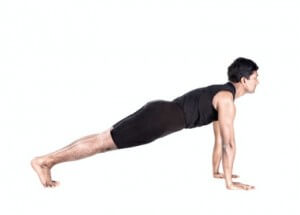
We all have our favorite exercises, the ones that we do with regularity. However, what if these exercises were actually doing more harm than good? It is possible, according to fitness trainers, physiotherapists, and chiropractors, to actually hurt the body in an attempt to help it.
Problems arise, mostly from poor form and body mechanics. Over time, these problems can cause a number of irritating side effects such as muscle pain, pinching and even strains. If you are super sore for a long time after finishing your workout – you many want to consider which exercises are causing the most discomfort.
Here are three common exercises that are often less beneficial than we may think, and three replacement exercises to try.
Lateral Lunge: Lunges strengthen the legs but can also cause serious problems with your knees. This happens when the toes are pointed outwards, and a lot of pressure is put on the knees. In addition, flexing the lower back can also cause pain in the lumbar spine. A better option for strengthening glutes and quads is a wall sit.
This exercise, which uses an exercise ball, works the same way as lunges do but without the harmful up-and-down motion. The idea is to keep the legs parallel, and a hips’ width apart, and to bend down and sit into your hips with the ball against the wall. Sit still for a count of twenty and gently roll up and repeat. This highly effective exercise is very low-stress for the entire body.
Upright Row: Designed to work the bicep, trapezius and deltoid muscles, upright rows are being abandoned by trainers across the country. Known as one of the most harmful exercises performed, the upright row movement can cause serious injury over time. With each upward movement, a small tendon is pinched by the bones in front of the shoulder. As time goes on, the tendon wears down and is damaged, causing tremendous pain.
A good replacement exercise is shoulder raises. To perform a good shoulder raise, stand with your feet shoulder-width apart and raise dumbbells in front of your body. For best form – begin at the hips and end at eye level. Start out with light weight if you are not used to this exercise. You can increase it as you get stronger.
 Sit-Ups: The old sit-up exercise has been around a very long time. While the motion of the sit-up definitely puts pressure on the abdominal region, it also puts tremendous pressure on the spine and low back. The movement itself pulls the hip flexors over the spine which can leave you with low back pain. Replace this outdated ab workout with the plank.
Sit-Ups: The old sit-up exercise has been around a very long time. While the motion of the sit-up definitely puts pressure on the abdominal region, it also puts tremendous pressure on the spine and low back. The movement itself pulls the hip flexors over the spine which can leave you with low back pain. Replace this outdated ab workout with the plank.
Raise your body off the floor in a push-up position. Keep your shoulders directly under your elbows. Your legs should be straight out in back of you with your ankles, knees and thighs touching. Support your weight on your toes and your forearms. Keep a straight line from your feet to your head. Hold your abs tight and do not sag to the floor. Breathe slowly and hold the position for twenty seconds and repeat.
The plank is a safer way to tone and tighten abdominals and will not aggravate the spine or lower back since it is stretched out
-The Alternative Daily

